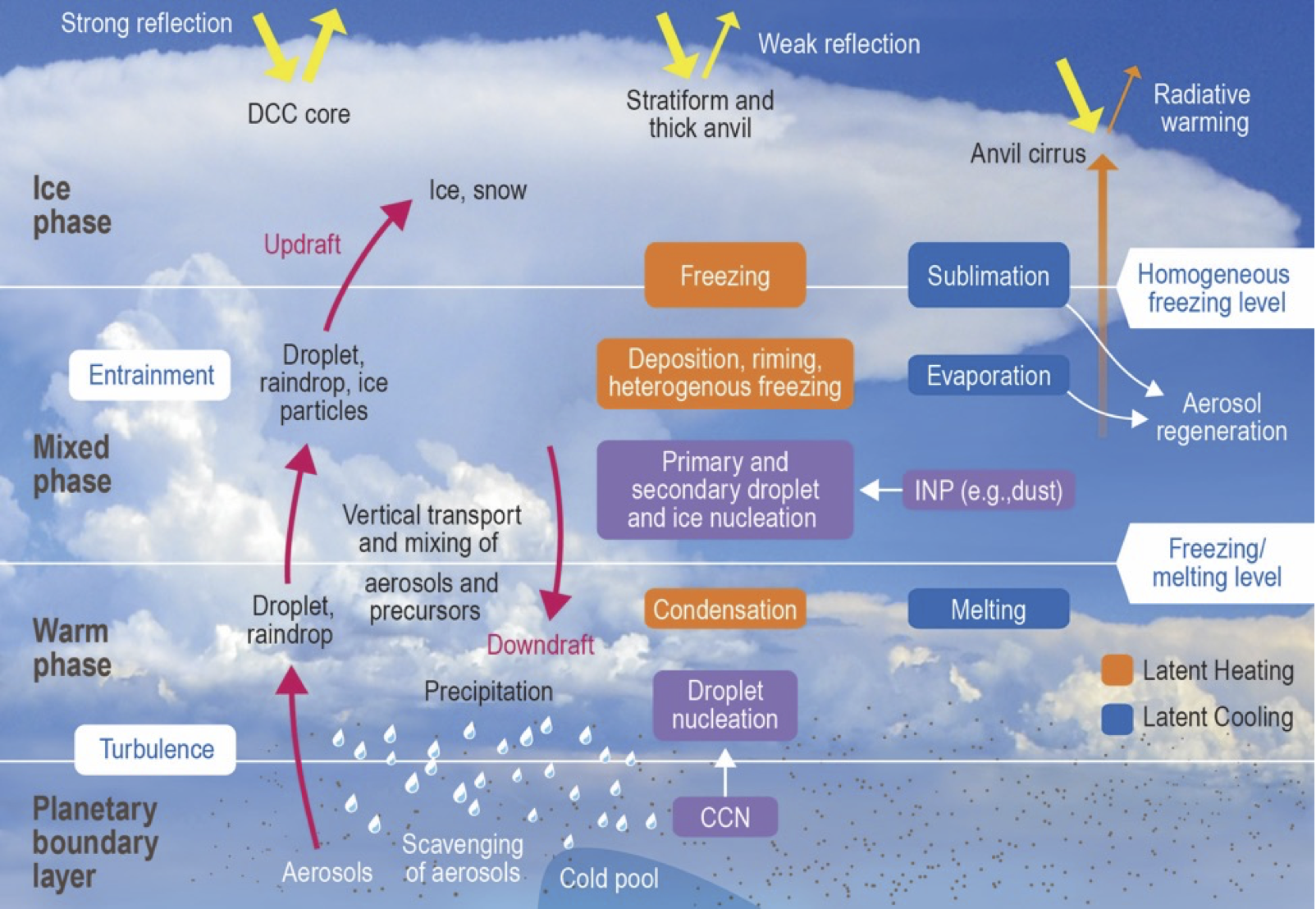Unveiling Aerosol Impacts on Deep Convective Clouds
Submitter
Fan, Jiwen — Argonne National Laboratory
Feng, Yan — Argonne National Laboratory
Area of Research
Cloud-Aerosol-Precipitation Interactions
Journal Reference
Fan J, Y Zhang, Z Li, H Yan, T Prabhakaran, D Rosenfeld, and A Khain. 2025. "Unveiling Aerosol Impacts on Deep Convective Clouds: Scientific Concept, Modeling, Observational Analysis, and Future Direction." Journal of Geophysical Research: Atmospheres, 130(15), e2024JD041931, 10.1029/2024JD041931.
Science

Complex interactions among deep convective cloud microphysics, dynamics, and aerosols. (Figure from Jiwen Fan, and published in Fan and Li (2022), Aerosol interactions with deep convection, Elsevier, ISBN: 9780128197660)
Deep convective clouds (DCCs) play a vital role in the Earth’s water and energy cycles. How DCCs interact with small particles in the air, also known as environmental aerosols, is not well understood. In this study, researchers reviewed how these particles can change DCC dynamics through two pathways. The first pathway is condensational invigoration. Condensational invigoration happens when there is too much water vapor in the air, a state called supersaturation. This excess causes a large transformation of tiny particles into droplets and release more heat to clouds. The second pathway is freezing-induced invigoration. Freezing-induced invigoration happens when large particles impact ice processes. This study identifies ideal conditions for largest effects of these pathways, recommends best practices for modeling and observational analysis, and highlights directions for future research.
Impact
This review clarifies the key knowledge for better understanding how aerosols interact with clouds, storms, and earth systems. It also gives clear recommendations for modeling and analysis. These recommendations include considering changes in aerosol, droplet, and supersaturation over time. In addition, the study provides insights for improving the prediction of DCCs and storm hazards (e.g., heavy rain, lightning, damaging winds and hailstone), particularly in the polluted environment. The study can also help guide future field campaigns in selecting the most important measurements needed.
Summary
Deep convective clouds (DCCs) play a crucial role in Earth's energy and water cycles, significantly impacting human lives and natural systems by generating hazardous weather conditions. Aerosols are recognized as important environmental factors that can influence DCCs. However, understanding aerosol-DCC interactions qualitatively and quantitatively remains a significant challenge, leading to substantial uncertainty. This study reviews how aerosol particles can enhance cloud dynamics through condensational invigoration and freezing-induced invigoration. The study identifies ideal conditions for these effects, recommends best practices for modeling and observational analysis, and highlights promising directions for future research. The findings also guide future field campaigns by showing which measurements (such as updraft speeds, supersaturation, and droplet properties) are key.
Keep up with the Atmospheric Observer
Updates on ARM news, events, and opportunities delivered to your inbox
ARM User Profile
ARM welcomes users from all institutions and nations. A free ARM user account is needed to access ARM data.


















